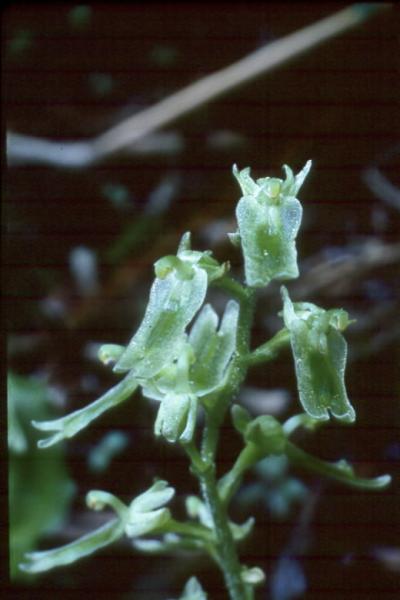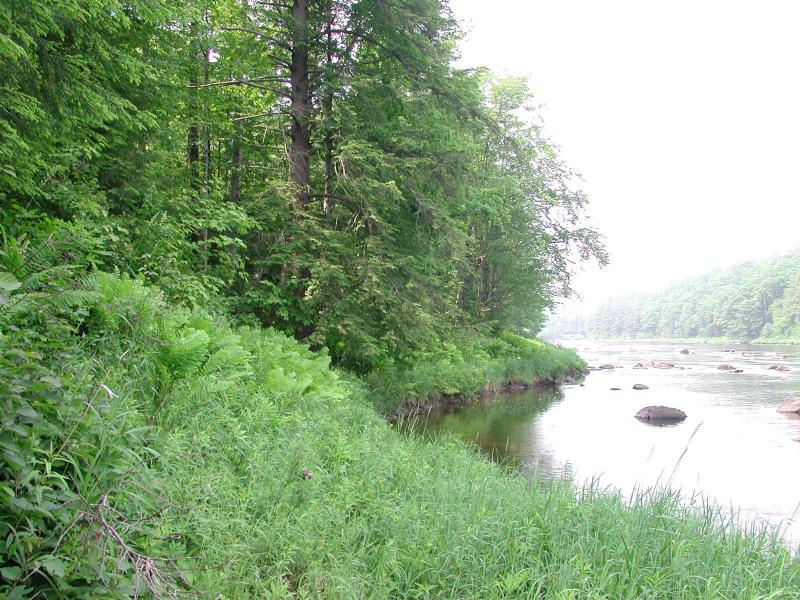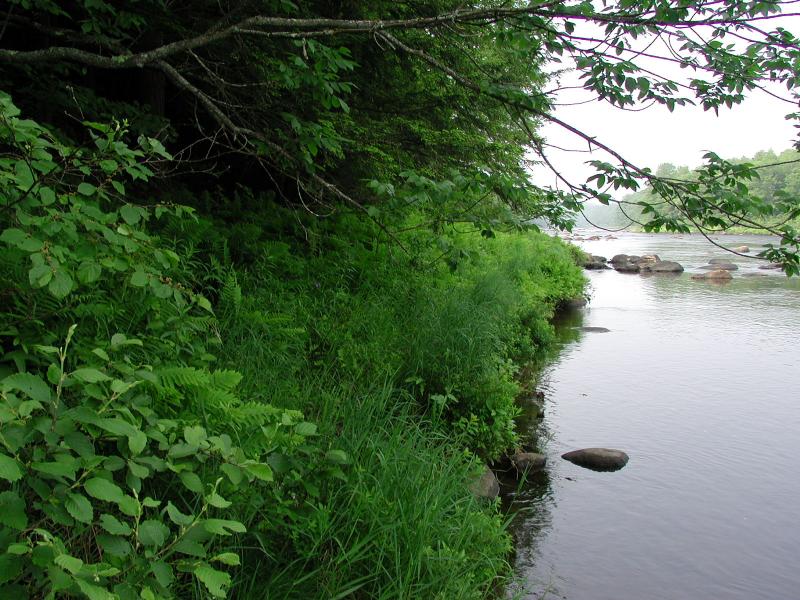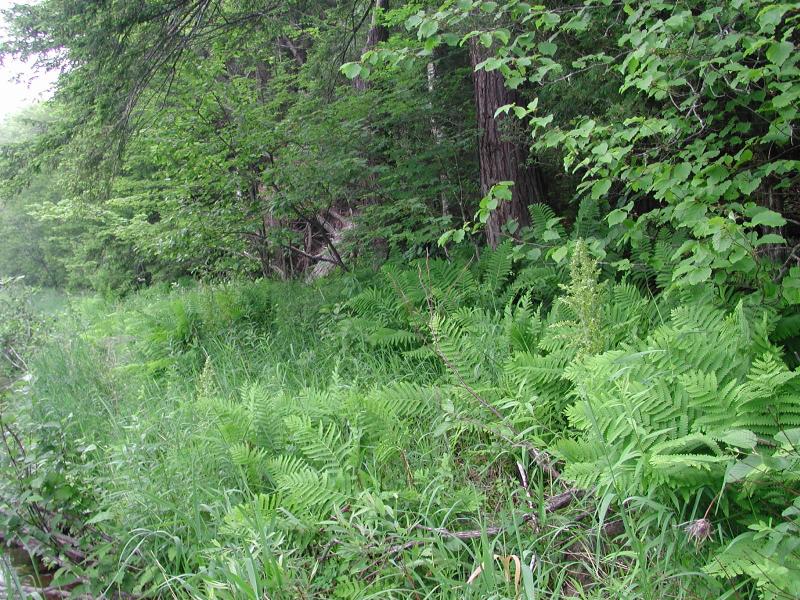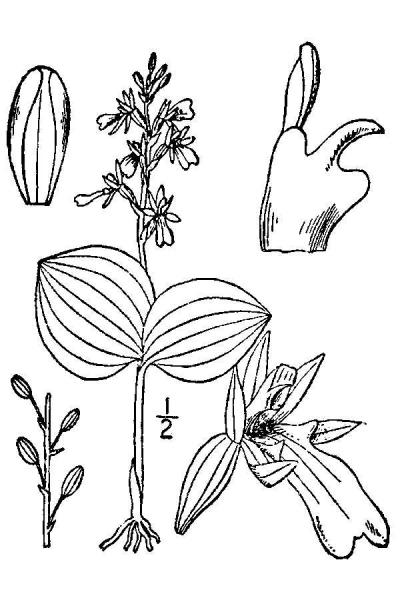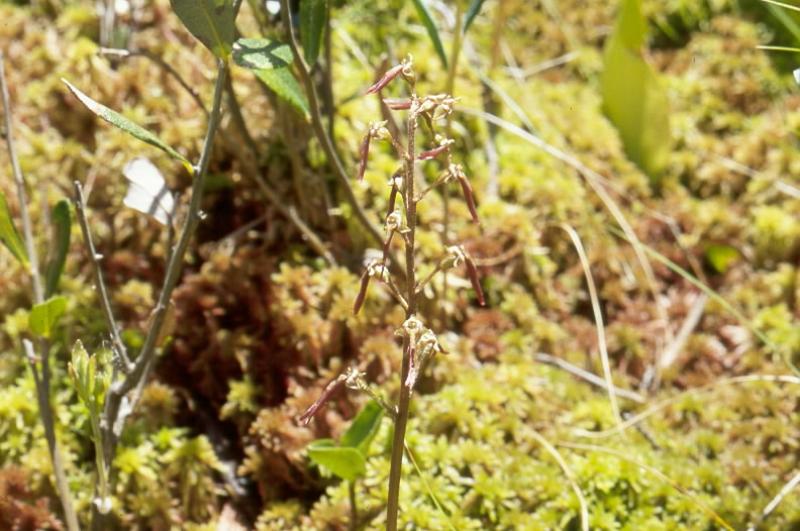Auricled Twayblade
Neottia auriculata (Wiegand) Szlachetko
- Class
- Monocotyledoneae (Monocots)
- Family
- Orchidaceae (Orchid Family)
- State Protection
- Endangered
Listed as Endangered by New York State: in imminent danger of extirpation in New York. For animals, taking, importation, transportation, or possession is prohibited, except under license or permit. For plants, removal or damage without the consent of the landowner is prohibited.
- Federal Protection
- Not Listed
- State Conservation Status Rank
- S1
Critically Imperiled in New York - Especially vulnerable to disappearing from New York due to extreme rarity or other factors; typically 5 or fewer populations or locations in New York, very few individuals, very restricted range, very few remaining acres (or miles of stream), and/or very steep declines.
- Global Conservation Status Rank
- G3G4
Vulnerable globally, or Apparently Secure - At moderate risk of extinction, with relatively few populations or locations in the world, few individuals, and/or restricted range; or uncommon but not rare globally; may be rare in some parts of its range; possibly some cause for long-term concern due to declines or other factors. More information is needed to assign either G3 or G4.
Summary
Did you know?
Auricled twayblade was described as a separate species in 1899, the last of the Listera species to be recognized. The genus is named for Thomas Lister, a seventeenth century naturalist, perhaps the first to suggest the need for and usefulness of geologic surveys. Throughout most of its range it lives along streams and rivers where it is subject to annual flooding.
State Ranking Justification
This orchid has only been observed at two locations in New York, and only one site is known today. There is plently of additional available habitat, but surveys are difficult since this is such a small plant, and populations tend to be small and local. More survey work is needed.
Short-term Trends
New York is at the southern edge of the range of this orchid. This orchid has always been rare in New York. The known population is monitored frequently and the population seems to flucuate from year to year. The average population size over a 5-10 year period seems relatively stable though.
Long-term Trends
As a plant that has always been rare, a long-term assessment is difficult. The number of populations appears to be relatively stable. Targeted surveys may locate additional populations, but this small plant is difficult to find. There is plenty of suitable and high quality habitat available within the Adirondacks and Tug Hill, so there is the potential that we will find more populations over time. These populations would not necessarily indicate an increasing trend though, but just reflect an ability to locate populations that likely have been present all along.
Conservation and Management
Threats
Some fear that natural flooding and ice scouring may threaten this plant, but it seems to reappear each year after significant flooding and ice scouring events. These actions may actually maintain these populations. There are few real threats to this plant in New York.
Conservation Strategies and Management Practices
No direct management requirements are needed for this orchid except to protect the sites where populations occur. This should include protection to any waterways that may influence the populations.
Research Needs
More research is needed on the habitat requirements so targeted surveys may be conducted. A computer distribution model may be helpful in locating new populations.
Habitat
Habitat
This orchid is found in low woods or along riverbanks, often under hemlock or near coniferous swamps or alder thickets (New York Natural Heritage Program 2005). Alluvial soils in low, moist, hardwood forests or mixed hardwood-coniferous forests, shrub swamps, sphagnum bogs; requires soil that remains cool throughout summer, with high degree of acidity (Flora of North America 2002). Wet woods and thickets (Gleason and Cronquist 1991). Most characteristic of sandy soil in open alder thickets along rivers and occasionally in mixed woods or spuce-fir woods (Voss 1972). Alluvial banks, calcareous silts or crevices, alder-thickets, and arbor-vitae swamps (Fernald 1970).
Associated Ecological Communities
- Floodplain forest*
(guide)
A hardwood forest that occurs on mineral soils on low terraces of river floodplains and river deltas. These sites are characterized by their flood regime; low areas are annually flooded in spring, and high areas are flooded irregularly.
- Northern white cedar swamp*
(guide)
A swamp that occurs on organic soils in cool, poorly drained depressions in central and northern New York, and along lakes and streams in the northern half of the state. These swamps are often spring-fed with continually saturated soils. Soils are often rich in calcium. The characteristic tree is northern white cedar, which makes up more than 30% of the canopy cover.
- Red maple-hardwood swamp*
(guide)
A hardwood swamp that occurs in poorly drained depressions, usually on inorganic soils. Red maple is usually the most abundant canopy tree, but it can also be codominant with white, green, or black ash; white or slippery elm; yellow birch; and swamp white oak.
- Riverside ice meadow*
(guide)
A meadow community that occurs on gently sloping cobble shores and rock outcrops along large rivers in areas where winter ice floes are pushed up onto the shore, forming an ice pack that remains until late spring. The ice scours the meadow, cutting back woody plants.
- Shrub swamp*
(guide)
An inland wetland dominated by tall shrubs that occurs along the shore of a lake or river, in a wet depression or valley not associated with lakes, or as a transition zone between a marsh, fen, or bog and a swamp or upland community. Shrub swamps are very common and quite variable.
- Spruce-fir swamp*
(guide)
A conifer swamp that typically occurs in a drainage basin but also can occur at the edge of a lake or pond or along gentle slopes of islands. These swamps are usually dense, with a fairly closed canopy (80 to 90% cover). The dominant tree is usually red spruce. Codominant trees include balsam fir and red maple. In the Catskills, balsam fir may be absent, and in the Adirondacks, black spruce or white spruce may replace red spruce as a dominant tree.
* probable association but not confirmed.
Associated Species
- Acer saccharum (sugar maple)
- Alnus incana ssp. rugosa (speckled alder)
- Fraxinus americana (white ash)
- Mnium
- Osmunda cinnamomea
- Osmunda claytoniana (interrupted fern)
- Racomitrium heterostichum
- Tsuga canadensis (eastern hemlock)
- Veratrum viride (false hellebore, Indian corn lily)
Range
New York State Distribution
This orchid is restricted to the Adirondack and Tug Hill regions. Even within these regions, it is very habitat specific and has only been reported from two locations.
Global Distribution
This orchid ranges from Labrador and Newfoundland through Quebec, southern Ontario, and northeastern Minnesota, south to northern Wisconsin, northern Michigan, northern New York, northern Vermont, and Maine.
Identification Comments
General Description
Auricled twayblade is a small hard-to-see orchid that only grows 4-10 inches tall. Halfway up the stem are two opposite, egg-shaped leaves 1-2 inches long and perpendicular to the stem. The stem above the leaves is glandular-hairy and produces 10-20 flowers. Flowers have tiny, narrow white sepals and petals that bend back and a conspicuous, broad, greenish white lip with a darker green center. The lip is slightly narrowed in the middle with two short lobes at the tip and two short lobes at the base which project upward into the center of the flower.
Identifying Characteristics
This small orchid is 10-25 cm tall. The ovate leaves are 2-5 cm long. The rachis (main axil of inflorescence) is glandular, but the pedicel and ovary are glabrous. There may be up to 20 flowers per inflorescence, with pale green lips. The lip is 6-11 mm long, and nearly as broad near the base as it is near lip summit. There are no lateral teeth near the lip base, but there may be a pair of minute lobes (i.e., auricles and the reason for the name) that curve around and clasp the column. The column is 2.5-3 mm long.
Best Life Stage for Proper Identification
This plant is best identified by its flowers. Due to its rare nature though, the plant should be documented through a series of photographs. The photos should capture the overall look of the plant as well as close-up images of the flower.
Similar Species
Listera cordata and Listera australis have a lip that is cleft, with the lip having linear segments, and a column that is less than 1.5 mm long. Listera convallarioides has a lip that is narrowed to the base and usually has two small lateral teeth near the base of the lip. There is a known hybrid between Listera auriculata and Listera convallarioides (Listera x veltmanii) that is indeed intermediate between these two parents. This hybrid has lobes near the base of the lip, but these lobes project away from the column. This hybrid may also back-cross with either parent. The hybrid should be sought where both parents are thought to be in close proximity.
Best Time to See
This plant flowers from June to early July, with fruits persisting until snowfall. Surveys are best conducted when this plant is in flower.
- Flowering
- Fruiting
The time of year you would expect to find Auricled Twayblade flowering and fruiting in New York.
Auricled Twayblade Images
Images of Similar Species
Taxonomy
Auricled Twayblade
Neottia auriculata (Wiegand) Szlachetko
- Kingdom Plantae
- Phylum Anthophyta
- Class Monocotyledoneae
(Monocots)
- Order Orchidales
- Family Orchidaceae (Orchid Family)
- Order Orchidales
- Class Monocotyledoneae
(Monocots)
- Phylum Anthophyta
Synonyms
- Listera auriculata Wieg.
- Ophrys auriculata (Wiegand) House
Additional Resources
Best Identification Reference
Flora of North America Editorial Committee. 2002. Flora of North America, North of Mexico. Volume 26. Magnoliophyta: Liliidae: Liliales and Orchidales. Oxford University Press, New York. 723 pp.
Other References
Crow, Garrett E. 1982. New England's Rare, Threatened, and Endangered Plants. Prepared for the United States Department of Interior, Fish and Wildlife Service, Northeast Region. June 1982.
Fernald, M.L. 1950. Gray's manual of botany. 8th edition. D. Van Nostrand, New York. 1632 pp.
Gleason, Henry A. and A. Cronquist. 1991. Manual of Vascular Plants of Northeastern United States and Adjacent Canada. The New York Botanical Garden, Bronx, New York. 910 pp.
Holmgren, Noel. 1998. The Illustrated Companion to Gleason and Cronquist's Manual. Illustrations of the Vascular Plants of Northeastern United States and Adjacent Canada. The New York Botanical Garden, Bronx, New York.
Mitchell, Richard S. and Charles J. Sheviak. 1981. Rare Plants of New York State. Bull No. 445. New York State Museum. Univ. of New York. State Ed. Department Albany, NY.
Mitchell, Richard S. and Gordon C. Tucker. 1997. Revised Checklist of New York State Plants. Contributions to a Flora of New York State. Checklist IV. Bulletin No. 490. New York State Museum. Albany, NY. 400 pp.
New York Natural Heritage Program. 2010. Biotics database. New York Natural Heritage Program. New York State Department of Environmental Conservation. Albany, NY.
New York Natural Heritage Program. 2024. New York Natural Heritage Program Databases. Albany, NY.
Voss, E.G. 1972. Michigan Flora, Part I. Gymnosperms and Monocots. Cranbrook Institute of Science Bulletin 55 and the University of Michigan Herbarium. Ann Arbor. 488 pp.
Weldy, T. and D. Werier. 2010. New York flora atlas. [S.M. Landry, K.N. Campbell, and L.D. Mabe (original application development), Florida Center for Community Design and Research http://www.fccdr.usf.edu/. University of South Florida http://www.usf.edu/]. New York Flora Association http://newyork.plantatlas.usf.edu/, Albany, New York
Whiting, R.E. and P.M. Catling. 1977. Distribution of the auricled twayblade orchid (Listera auriculata) in Canada and description of the new stations in southern Ontario. Can. Field Naturalist 91(4): 403-406.
Links
About This Guide
Information for this guide was last updated on: August 28, 2019
Please cite this page as:
New York Natural Heritage Program. 2024.
Online Conservation Guide for
Neottia auriculata.
Available from: https://guides.nynhp.org/auricled-twayblade/.
Accessed July 26, 2024.
